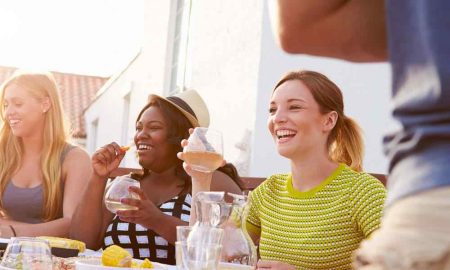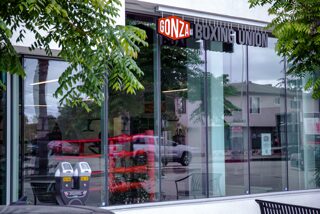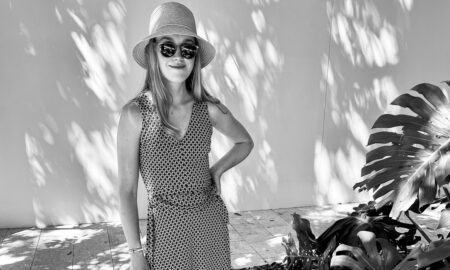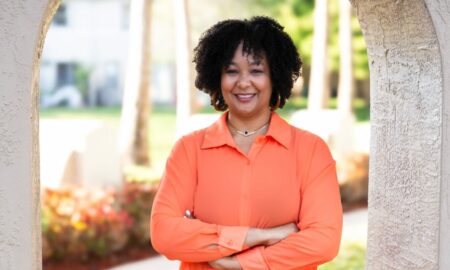

Today we’d like to introduce you to Asha Loring.
Asha, let’s start with your story. We’d love to hear how you got started and how the journey has been so far.
Health in the Hood began 5 years ago as an answer to the call for fresh foods in low-income communities. We found the health and wellness disparities among Miami neighborhoods was palpable. Having grown up in a community gardening family – the notion of growing fresh foods in vacant lots was not a foreign concept to us. My father began an urban farming organization in the 90s that focused its efforts in Overtown Miami – providing free, fresh foods for residents. Health in the Hood expanded upon this model in 2013 by building and maintaining 5 vegetable gardens across South Florida while providing health education resources for children and families.
Health in the Hood partners with various community agencies, churches and government entities to identify and gain access to vacant land. We also work closely with our partners to engage residents and the community by facilitating high energy, incentive-based health education programs. Our health education model consists of three focus areas: 1. Nutrition 2. Exercise 3. Urban Farming.
By providing access to fresh foods and health education in low-income neighborhoods, we are putting children on the path to healthy futures, giving parents useful information and creating environments that encourage healthy choices.
Health in the Hood is working to create healthier communities, one garden at a time!
We’re always bombarded by how great it is to pursue your passion, etc. – but we’ve spoken with enough people to know that it’s not always easy. Overall, would you say things have been easy for you?
Over the past 5 years, we have worked to iron out our model- refining gardening practices, deepening community engagement strategies and expanding our health education programs. Our main challenges have been around the land acquisition of 1.5-2 acres of vacant land in urban communities, upon which we would expand our urban garden model into an urban farm model. Our other challenge remains meeting the demand from new partners and communities asking for Health in the Hood gardens, due to funding deficits.
So, as you know, we’re impressed with Health in the Hood – tell our readers more, for example, what you’re most proud of as a company and what sets you apart from others.
What We Do:
Health in the Hood is helping communities get and stay healthy by building vegetable gardens and teaching wellness in urban neighborhoods. We are a 501c3 organization that plants community vegetable gardens in disadvantaged neighborhoods. Health in the Hood is connecting communities to wellness by providing free, fresh foods for children and families in food deserts that lack healthy options. The communities in which we work have little or no access to fresh fruits and vegetables, health education or organized exercise. All vegetables grown on our urban farms are distributed for free to children and families, local food pantries, churches and community centers in food desert neighborhoods.
Our gardens produce many different vegetables and fruits including collard greens, lettuce, tomatoes, spinach, herbs, green beans, radishes, carrots, arugula, squash, cucumbers, potatoes, watermelon and more! Local residents are hired to maintain the gardens, providing needed jobs and vibrant murals are painted on the vegetable beds to enhance community beautification.
In addition to providing free healthy foods for families in food deserts, our community gardens also serve as living classrooms where we host high energy, incentive-based nutrition and fitness programs. Our health education curriculum includes fun nutrition games, healthy eating competitions, cooking demonstrations, ingredient label training, food journaling, exercise obstacles courses, yoga and aerobics classes and more!
We are known to bring fun, high energy, incentive-based programming to communities.
Our programming is unique in its nature- in that we are working in under-served communities where opportunities for fresh foods are nearly impossible. Our gardens are food garden oasis’ amidst desolate and difficult food deserts neighborhoods.
So, what’s next? Any big plans?
Our expansion plans include the acquisition of 1.5-2 acres of land in a disadvantaged community to convert into an urban vegetable farm. By obtaining more land, we are able to grow additional food- serving more families while moving us closer to a sustainable model. We also envision converting a retired city bus into a mobile vegetable stand to amplify our impact and serve additional children and families.
Pricing:
- One 40ft vegetable bed costs $2,500/year to install and maintain
Contact Info:
- Website: www.healthinthehood.org
- Phone: 917-363-1275
- Email: a.loring@healthinthehood.org
- Instagram: @healthinthehood
- Facebook: https://www.facebook.com/HealthInTheHood/?fref=ts
- Twitter: @healthinthehood








Image Credit:
Health in the Hood
Getting in touch: VoyageMIA is built on recommendations from the community; it’s how we uncover hidden gems, so if you know someone who deserves recognition please let us know here.

















